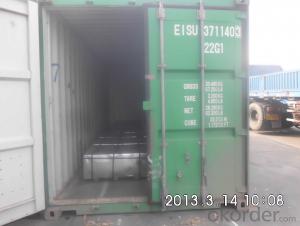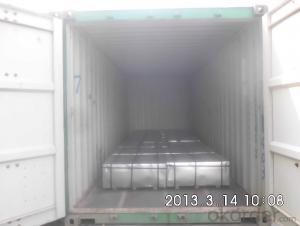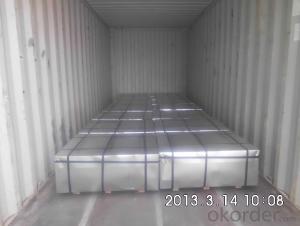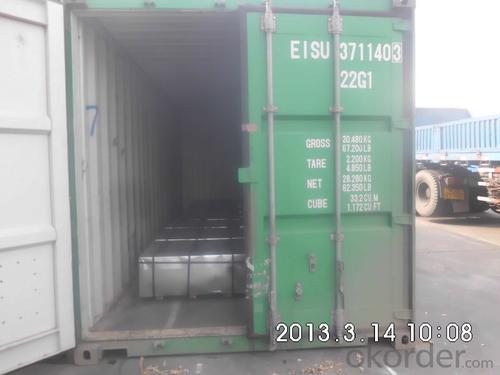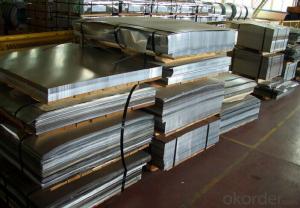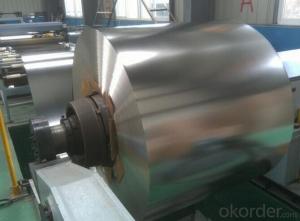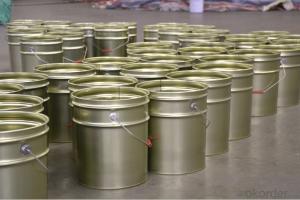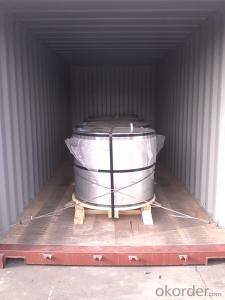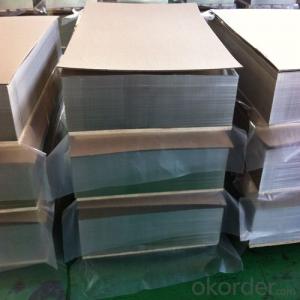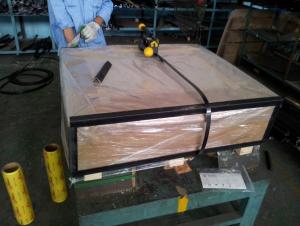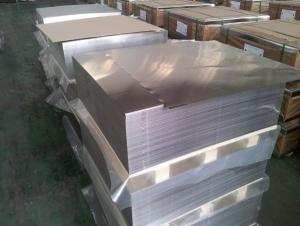Prime Quality Tin Free Steel for Can Lids
- Loading Port:
- Shanghai
- Payment Terms:
- TT OR LC
- Min Order Qty:
- 25 m.t.
- Supply Capability:
- 25000 m.t./month
OKorder Service Pledge
OKorder Financial Service
You Might Also Like
Specification
1.Structure of Prime Quality Tin Free Steel for Can Lids Description
Tin Free Steel (TFS) is thin black plate with two coats; one of metal chrome film and the other of chromium oxide. TFS is ideal for the manufacturing of crowns, container ends & shallow drawn cans etc. TFS is also known as Chromium coated steel.
2.Main Features of the Prime Quality Tin Free Steel for Can Lids
Chromium coated
Corrosion Resistant
Easier to recycle.
Sulphur Blackening Resistance: TFS has sulphur resistance properties, which can be used for canning protein- rich food such as fish.
Filiform Rust Resistance: Filiform is superficial corrosion of the base metal. TFS has a superior base metal which makes it corrosion resistance.
Coating: The coating in TFS is not amphoteric (having the characteristic of an acid and a base, is a compound that can react as either an acid or a base). This means that detergents and dispersion colors can be packed easily.
Paint Adhesion : TFS possesses better paint adhesion properties, thus making it ideal for DRD cans and adhesive bonded cans.
3.Prime Quality Tin Free Steel for Can Lids Images
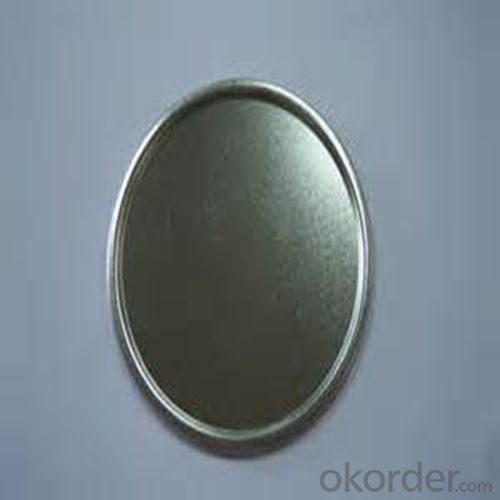
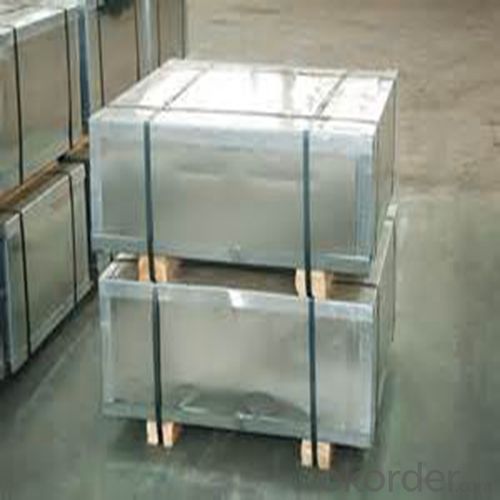
4.Prime Quality Tin Free Steel for Can Lids Specification
TFS (TIN FREE STEEL)
Thickness: 0.13 to 0.40mm
Width: 600 to 1250mm
Coating:50-60G/M2
Temper : BA and CA
For metal packaging usage
5.FAQ of Prime Quality Tin Free Steel for Can Lids
-What is MOQ?
Our MOQ would be 25 tons.
- Do you only have prime quality TFS ?
We can supply both prime and second quality TFS.
- Q: What are the typical lead times for tinplate tooling?
- The typical lead times for tinplate tooling can vary depending on various factors such as the complexity of the design, size of the tooling, and the workload of the manufacturer. However, in general, lead times for tinplate tooling can range from a few weeks to a couple of months. It is important to communicate with the manufacturer or supplier to get a more accurate estimate based on your specific requirements.
- Q: What are the common packaging formats for tinplate?
- The common packaging formats for tinplate include cans, containers, tins, and boxes.
- Q: What are the main applications of tinplate in the marine industry?
- Tinplate is commonly used in the marine industry for various applications including the production of cans and containers for storing food, beverages, and other supplies on ships. It is also utilized for manufacturing components such as panels, fittings, and structural parts due to its corrosion resistance and durability in marine environments. Additionally, tinplate is employed in the construction of ship hulls, bulkheads, and decks, providing protection against rust and enhancing the longevity of marine vessels.
- Q: Can tinplate be used for electrical components?
- Yes, tinplate can be used for electrical components. Tinplate is a type of steel coated with a thin layer of tin, which provides good electrical conductivity and corrosion resistance. It is commonly used for manufacturing electrical components such as connectors, terminals, and shielding materials.
- Q: What are the main innovations in tinplate production and use?
- One of the main innovations in tinplate production is the introduction of continuous annealing, a process that allows for a more efficient and consistent production of tin-coated steel sheets. This method not only reduces production time and energy consumption but also improves the quality of the final product by ensuring a more uniform coating. In terms of use, the development of tinplate packaging has been a significant innovation. Tinplate cans and containers have become widely used in the food and beverage industry due to their excellent preservation properties and ability to protect the contents from external factors such as light, moisture, and oxygen. Additionally, manufacturers have also started using tinplate in various other sectors like electronics, automotive, and construction due to its durability, corrosion resistance, and versatility. Overall, these advancements in production and use have greatly expanded the applications and benefits of tinplate.
- Q: How does tinplate perform in extreme temperatures?
- Tinplate performs well in extreme temperatures due to its high melting point and excellent heat resistance properties. It remains stable and maintains its mechanical strength even under extreme heat or cold conditions, making it a reliable material for various applications in extreme temperature environments.
- Q: Can tinplate be used in extreme temperatures?
- Yes, tinplate can be used in extreme temperatures. It is known for its excellent resistance to high and low temperatures, making it suitable for various applications in extreme environments.
- Q: What are the different methods of storing tinplate packaging?
- Some of the different methods of storing tinplate packaging include stacking the tinplates on shelves or pallets, organizing them in bins or containers, using racks or hooks to hang them, or placing them in specialized storage cabinets or drawers. It is important to ensure that the storage environment is clean, dry, and free from any potential sources of damage such as moisture, extreme temperature, or direct sunlight.
- Q: Can tinplate be used for jewelry and fashion accessories?
- Yes, tinplate can be used for jewelry and fashion accessories. It is a versatile material that can be shaped and designed into various forms, making it suitable for creating unique and intricate jewelry pieces. Tinplate is also durable and lightweight, making it comfortable to wear. Additionally, it can be coated with different finishes or colors to enhance its aesthetic appeal.
- Q: What are the different ways tinplate packaging can be decorated?
- There are several different ways tinplate packaging can be decorated, including lithography, embossing, printing, and labeling. Lithography involves applying a design or image onto the tinplate using a printing process. Embossing creates raised or recessed designs on the surface of the tinplate, adding texture and dimension. Printing can be done using various techniques such as screen printing, flexography, or digital printing to apply graphics, logos, or text onto the tinplate. Lastly, labeling involves attaching pre-printed labels onto the tinplate packaging, allowing for custom branding or labeling options.
Send your message to us
Prime Quality Tin Free Steel for Can Lids
- Loading Port:
- Shanghai
- Payment Terms:
- TT OR LC
- Min Order Qty:
- 25 m.t.
- Supply Capability:
- 25000 m.t./month
OKorder Service Pledge
OKorder Financial Service
Similar products
Hot products
Hot Searches
Related keywords
